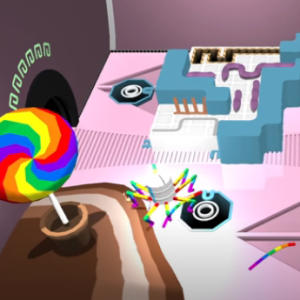Similiar games
LoveMoney presents the player with a single objective — to gather enough money for a medical operation. The situation is direct and urgent, but the way to reach the goal is not fixed. The story introduces Harvey Harvington, a man who offers help in ways that test both practicality and morality. The setting is intentionally limited, drawing attention to the mechanics of decision-making rather than exploration. Time moves forward with every click and choice, and the player’s relationship with money becomes the central form of progress.
Structure and Gameplay Dynamics
The gameplay in LoveMoney combines incremental mechanics with narrative interaction. What begins as a simple clicking task develops into a system that reflects ethical tension and personal responsibility.
The main structure includes:
- Manual or automated income generation.
- Upgrade paths that increase efficiency or influence relationships.
- Dialogues that shape the moral context of progress.
- Multiple endings based on financial success and character behavior.
Each round of action feeds into the next, linking mechanical repetition with narrative consequence.
Decision Framework and Player Autonomy
LoveMoney builds its challenge around freedom of choice. Every decision contributes to the same objective but carries distinct implications. Pursuing fast profit may damage trust with other characters, while cautious or ethical decisions slow progress. This tension defines the rhythm of play — players are forced to measure time against consequence. The system does not impose judgment; instead, it records outcomes, showing how the combination of greed, hesitation, and necessity shapes the story’s direction.
Presentation and System Layout
The interface of LoveMoney mirrors its thematic simplicity. The player views a single workspace with income counters, dialogue panels, and upgrade options. Visual movement is minimal, reinforcing focus on numbers and decisions. Each click produces immediate feedback — sound, animation, or small text acknowledgment — maintaining flow without distraction. The soundtrack and pacing align with the mechanics, producing a consistent rhythm of repetition that parallels the monotony and pressure of financial struggle.
Experience and Interpretation
LoveMoney converts economic simulation into a reflection on urgency and consequence. It asks what a person is willing to exchange for stability when time and ethics conflict. There is no permanent success or failure; outcomes depend on how the player prioritizes morality, efficiency, and survival. When the game concludes, it presents not a single truth but a record of behavior — how the player reached their goal and what changed along the way. LoveMoney transforms a simple clicker format into a model of personal negotiation between need and choice.




















